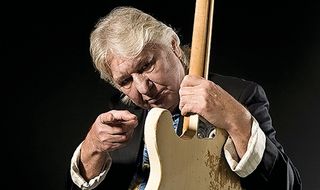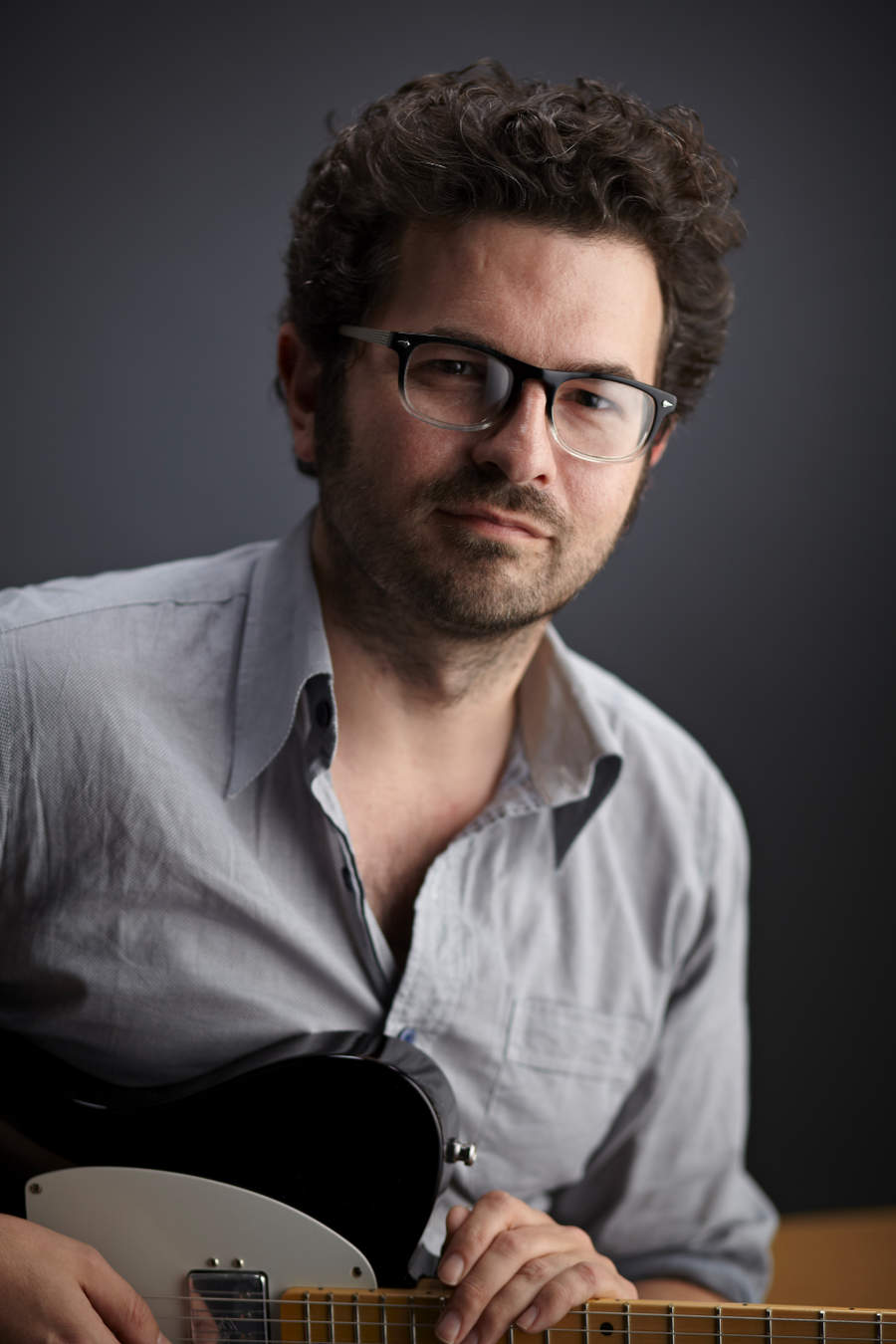Mick Ralphs joined Mott The Hoople back when non-master volume amps ruled the stage and 50s Gibsons could still be found hanging in junk shop windows with a double-digit price tag.
With a huge talent for writing songs that keep getting better as time goes on like a pair of old blue jeans, Mick has made the utmost of these vintage tools of the trade - also using them to searing effect in Bad Company for classic riffs such as Can't Get Enough.
Here he tells us about touring once more with Mott, why Fender's misunderstood Esquire is a tone machine with few rivals, and why lightweight guitars sing more sweetly...
How does it feel to play milestone tracks such as All The Young Dudes again, four decades on?
"Well, when we got back together the first time [for two reunion gigs in 2009] we hadn't played together for nearly 40 years, so we spent a lot of time talking because we hadn't seen each other. But when we eventually got around to playing it was really great. There was still a lot of life in those old songs and I hear All The Young Dudes on the radio and it still sounds pretty good to me. It hasn't really dated that much, unlike some records from that generation. So yeah, it's good fun."
What rig did you use in early incarnations of Mott, such as The Shakedown Sound?
"In those days I was using an 'SG' Les Paul before they became valuable. You know, the one with the sideways vibrato? Les Paul's name was still on the headstock. I think I was playing that at the time, either that or a Telecaster. And probably a Marshall with just one cabinet - I think it might have been a 50-watt amp. They were really good, those Marshall 50-watt heads, the ones with the black covering and the old logo."
How did you fit into the band in terms of guitar style?
"I remember in Mott my role was keeping the rhythm section together, because Pete Watts was out there doing his thing on bass and not really playing with the drummer. So, me being me, I felt I needed some sort of heavy, chunky rhythm to lay down a foundation for the rest of it. One of my big inspirations was Chuck Berry and his playing was always about the rhythm and the lyrics. So I've always been that way in my playing, really. In Bad Company it was only a three- piece, but I was playing big chords and keeping it simple, keeping it all going."
Tell us about David Bowie's involvement with All The Young Dudes...
"Bowie heard we were thinking of packing it in and said 'would you consider doing this song?' "
"He basically saved the band. We didn't really know him at all, and we were at a low ebb [after touring in] Switzerland and felt that we weren't getting anywhere with the Mott thing. We always had a good live following, but we weren't very good at making hit records.
"And then Bowie heard about the fact that we were thinking of packing it in and he wrote a very nice letter and he sent it to Pete and said, 'I really love your band and hope you won't break up: but if you're going to, would you consider doing this song?' And he sent a little reel-to-reel tape with All The Young Dudes on and Suffragette City.
"When we heard All The Young Dudes we said straight away, 'Well, that's a hit.' So it was great: he offered us that song then came in and got involved with the single first, before we did the album. In fact, the album version sounds quite different to the single of All The Young Dudes, because the single was done at Olympic Studios and then Bowie decided that he wanted to produce the whole album with us. So we did that later at Trident Studios, which has a different sound.
"It was a great experience working with him - he had some fantastic ideas and was a great bloke. We also learned a lot, because prior to that we used to just go in to the studio and charge through the songs in the Mott The Hoople fashion. But he was good at working out arrangements and dynamics and stuff like that."

Mick, pictured with his 1957 Fender Esquire © Will Ireland/Future Publishing
What gear did you use for those sessions?
"I was still using the old Marshalls, but probably a 100-watt head by then. And I had a very early Les Paul Goldtop, with two P-90s - the ones with the stop-tailpiece - that I'd found in the Orange shop in London years ago. I was looking at it and it was, like, £200. Of course, they're worth much more now, but it was a great guitar.
"So I went to Guy Stevens who was our mentor at Island Records. I said, 'I've just seen this guitar and it's great,' and he said, 'You've got to have it now!" And I said, 'Well, I haven't got any money,' and he said, 'I'll get the money from Island, don't worry.' Because he was very good at recognising that, if you found a guitar you like, you play it to the max.
"I used that in the early days of Mott up until the point where we went to America and I saw Leslie West playing a Junior and thought, 'I've got to get one of those.' It was such a great sound - so I played Juniors pretty much after that in Mott."
Looking back on it with hindsight, how do you feel about glam rock?
"We went on Top Of The Pops and were expected to wear stacked boots and girl's blouses, but Mott was more like a punk band than a glam rock band"
"I think that we got caught up in all that, with the Bowie connection, and when we had the hit and went on Top Of The Pops we were sort of expected to wear something silly: stacked boots and girl's blouses and all that sort of thing. But that didn't really sit that easy with me. We were quite outrageous in the Mott The Hoople days, but it was more like a punk band than a glam rock band. It was just full-tilt rock, because I remember people like Mick Jones of The Clash used to come and watch us play a lot in the old days.
"So Mott was a very exciting live band, but then we went on to become a glam-pop band, I suppose, and that's when I sort of lost interest in it, because it had changed from what it had started out as. On the one hand you've got success, but it was compromised, you know? It's a different thing, being in a pop band and being in an out-and-out rock band."
Did that prompt you to go back to basics with Bad Company in 1973?
"Yes, I wanted to get back to something more basic and bluesy, so I teamed up with Paul Rodgers who was touring with us - he had a band called Peace at the time, after Free - and we got to talking and I'd got all these songs like Can't Get Enough, Movin' On, Ready For Love. I'd sung Ready For Love in Mott already because Ian [Hunter], bless him, said, 'I love those songs but they don't suit my voice,' which I completely understand.
"But then Paul latched onto them, and when he gave his talent to it, it suddenly made a lot of sense to me. It was like back to the blues roots: simplicity, lots of feel. And yeah, it was a refreshing change to go back to that."
What rig are you using with Mott for the current tour? Any vintage gear?
"No, I've just come off the Bad Company tour and I just use rented Marshalls: I have a huge stack, but I don't use any of it hardly - just the bottom cabinets. I just like the look. Last time we did Mott, my tech managed to get me some JTM45 hand-wired amps, which is the closest thing you can get to the old Marshall heads. They're really, really good and I used two of those.
"Guitar-wise, for the last eight years I've been using a chambered Gibson Les Paul, which is like a historic Les Paul but it's hollow inside. The sound is better, I think. They're more sweet and airy, a bit like a cross between a 335 and a Les Paul. I really like that sweetness, because I've had some Sunbursts over the years and some have been great, some haven't been so good. But I found the lighter ones had a much sweeter tone, so I always look for lighter guitars."
So what's next for Mott The Hoople and Bad Company?
"With the Mott thing, it took four years from 2009 to 2013 to get them to do it again. Me and Ian wanted to do more, but at the time the other guys weren't sure. So whether we do anything after this I've no idea. I've never had a plan - it was just to try and get with the people you like to play with, and try to do the best you can. So I've really no idea what's going to happen next year, whether there's going to be more Mott or more Bad Company. But I'm sure my blues band will still be filling in the gaps!"
Mick Ralphs favourite guitars
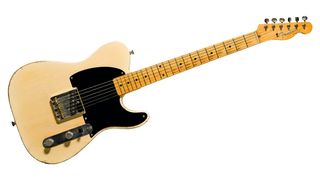
1957 Fender Esquire
"This is my old '57 Esquire, which I've had for years and years. I love it to bits. I found it in a shop in LA for $75 or something like that, during the Mott days. But somebody had put a humbucker in the neck position, so when I got it home I took that out and put a plain Fender Esquire plate in to cover up the hole. A '57 Esquire should have an off-white pickguard, but I've got a black one because I thought it looked cooler, like Jeff Beck or whatever. And I've used that ever since.
"When I first started working with Paul Rodgers it was just him and me initially, writing songs. I played him Can't Get Enough and I'd written it in an open G tuning, which is quite standard. But he said, 'Well, I like the song, but can you change the key?' So we figured out what key was good for him and it ended up being C, and I thought, 'Bloody hell - how do I do this?' I'd tuned the guitar up really high so the open chord was C.
"And, of course, I was popping strings. Even now it's quite a tight guitar to play, but it just had a certain ring, a certain sound. I used that on Movin' On and Can't Get Enough particularly."
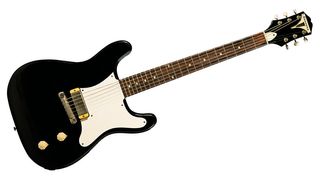
1959 Epiphone Coronet
"I came across these guitars some years back when I was on the road with Bad Company. Someone explained to me that it was made by Gibson when they bought Epiphone out, back around 1957. They made the slab-body Coronet that I've got for maybe one or two years in the late 1950s. They're basically like a Les Paul Junior, but they've got the Epiphone 'New Yorker' pickup in the bridge and some old radio dials!"
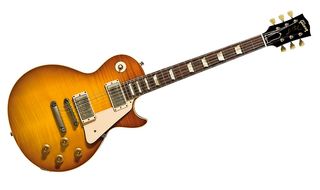
Gibson Les Paul Historic Chambered
"I always look for lighter guitars to give the tone that airiness, because I used to have a 335 years ago, a really nice one, and I loved the sound of that - but I came across this chambered Les Paul by accident through Tom Murphy of Gibson's Custom Shop, who's a legend."

1958 Gibson Les Paul Jr
"Back in the day we used to find Juniors in pawn shops in America for $75. The first one I bought was like this one, a double-cut. I said, 'How much is that red guitar in the window?', pretending I didn't know what it was. And the guy behind the counter said '$100' and I couldn't believe my luck. But I said '$100?' And he said, 'Okay, $75' [laughs].
"Those were the days when you could get bargain like that. This one is a '58 Junior that I bought when I was on the road with Bad Company earlier this year. It's a great guitar, but I paid about $5,000 for it!"
